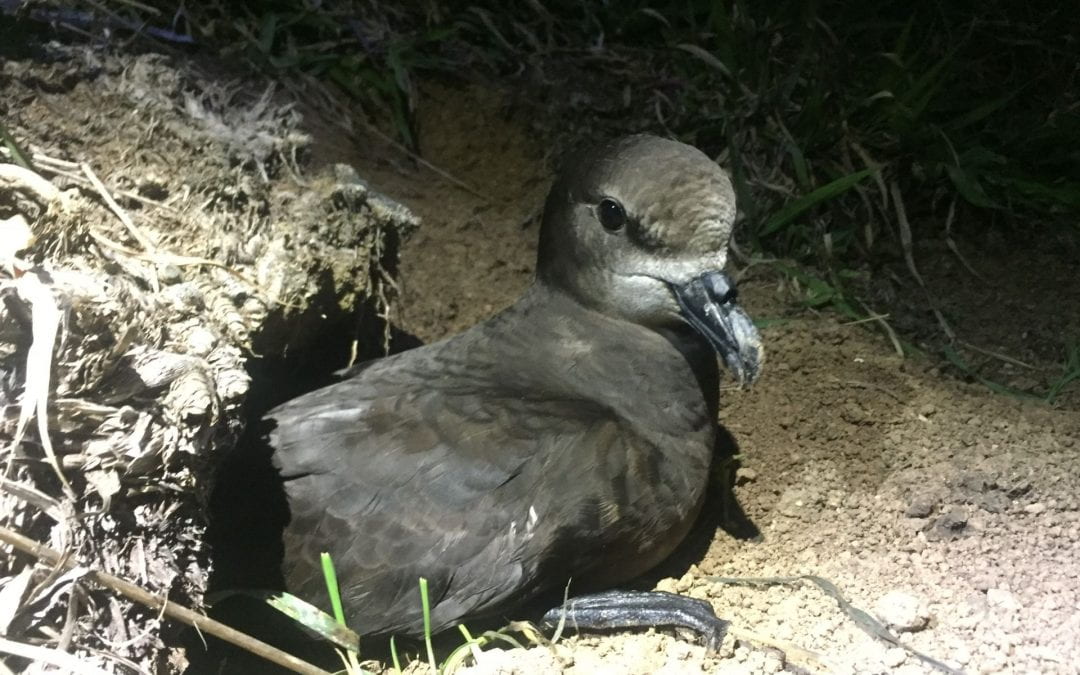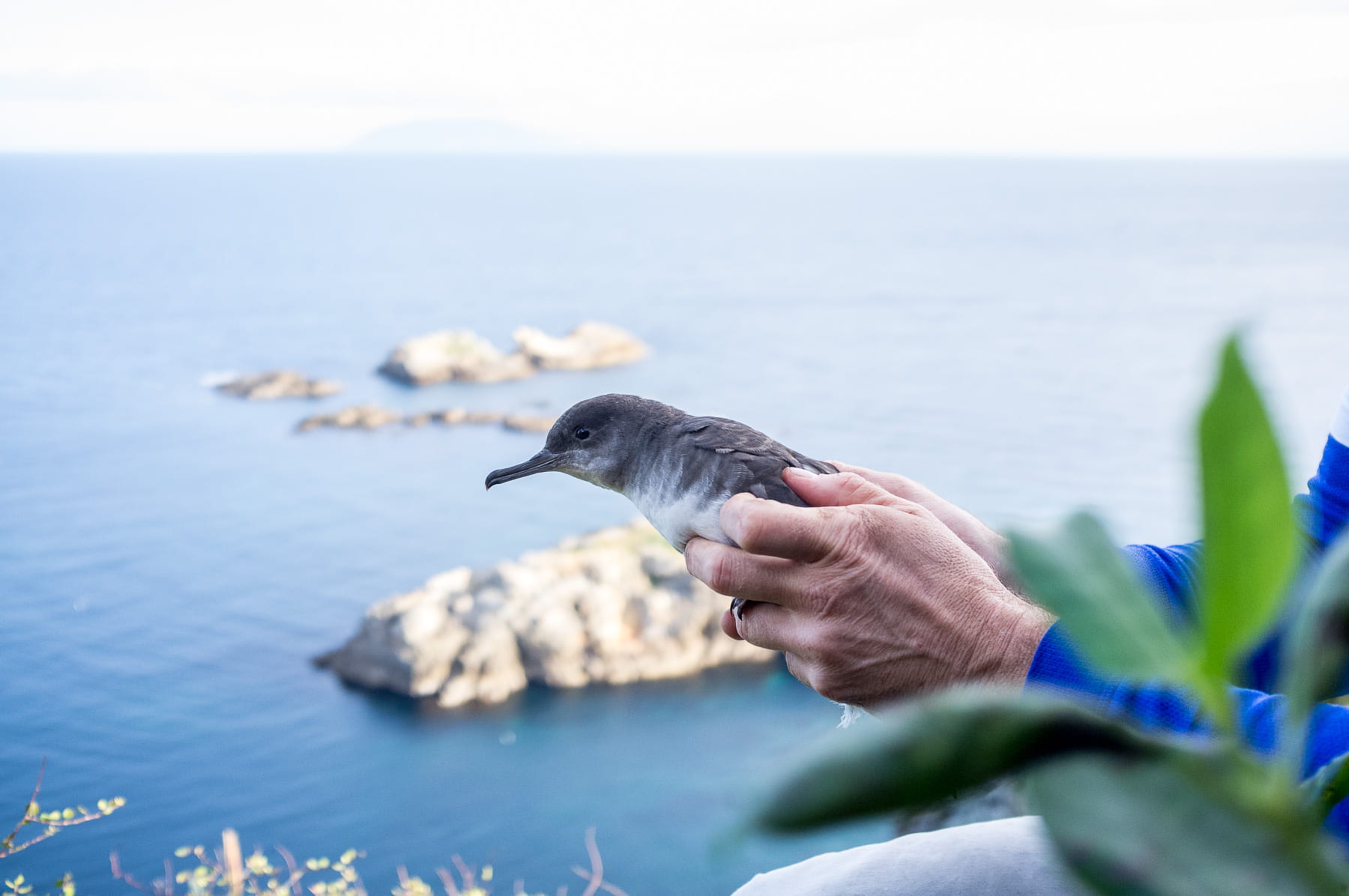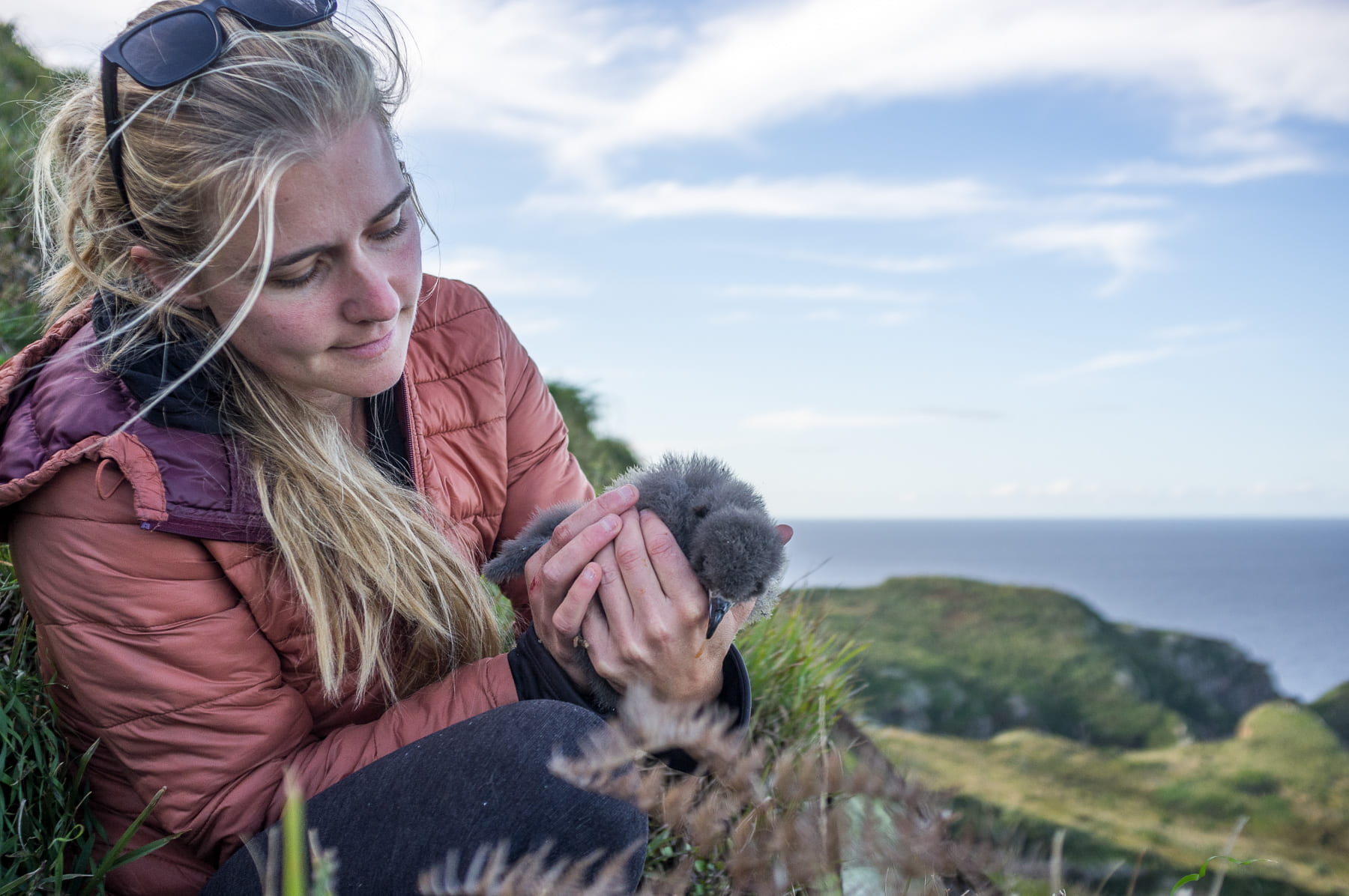By Brendon Dunphy
Currently, 90% of our seabirds are threatened with extinction. It is a colossal loss and a colossally sad number.
Aotearoa/New Zealand is the seabird capital of the world. From inspiring ocean wanderers such as the royal albatross (who may not touch dry land for six months); through to charismatic (but quite smelly) penguins bobbing around our coastal waters, we have the greatest diversity of seabird species anywhere on the planet. Our close proximity to productive ocean fronts, lack of major predators, and ideal breeding habitats (that remain) are the reasons we have such a legacy of huge seabird numbers. These vast numbers have also brought with them significant amounts of marine nutrients (via vomit, poop, and dead carcasses) essentially super-charging our forests and the life within.
However, we also hold the dubious honour of being the place where seabirds are most at risk. How did it get to be this way? The answer is simple – humans. We have cleared bush from hills, introduced mammals that either crushed burrows under their hooves or actively preyed upon seabird chicks (rats, stoats etc). We have changed the oceanic environment by overfishing key prey species, polluted waters with plastic resembling seabird prey, and warmed our oceans causing prey shifts and wide scale starvation of seabirds. More directly we have caught them in our nets or on hooks meant for tuna and other oceanic delicacies. It’s a national travesty, a travesty that unfortunately occurs over the horizon and out of sight of most of us.
My local fish shop sells buckets of Tītī/Sooty shearwater chicks harvested from around Rakiura/Stewart island. When tempted to try one, I am stopped by knowing ‘too much.’ I know that its parents undertake an annual migration of 60,000 km and in October migrated to Aotearoa from Alaska, a non-stop journey over 11 days. I know that over a period of two months, each parent took turns to look after that chick while the other foraged, sometimes entailing a trip down to Antarctic waters where they can dive down to 90 metres and hold their breath for a minute and half! All this effort for one chick. I’m not suggesting that harvest shouldn’t occur, but it’s left me very hesitant to sample them, given all I know.
If you happen to have a New Zealand five dollar note in your wallet, look at the Hoiho/Yellow eyed penguin on the front it. If you have seen this bird in the wild, cherish that memory as we have grave fears for its continued existence. In the last 20 years their populations have crashed by 50% from 7,000 in 2000 down to 3,200 – 3,600 today. Again, similar themes appear. They are victims of fishing, environmental change, disease, dogs. These birds also highlight the dual vulnerability of seabirds to dangers at sea, further compounded by those on land. We suspect we are seeing a range retraction of this species, pulling back from mainland New Zealand and down to the sub-Antarctic island refuges (we hope).
I could fill pages with similar stories of misery. But I’d rather not. I’d rather make some key points. Firstly, the world we ‘know’ is vastly different from what it should be. Somewhat obvious I know. I used to admire the peace and silence of the New Zealand bush until I realised I was walking through a cemetery. It should be filled with bird noise both night and day! Also, what has been the impact of losing our natural ‘top-dressers’ and the loss of the vital nutrients they bring?
Second, we need to understand the impact of mammalian predators. Four years ago, a single stoat made it onto one of our study islands; and it set about singlehandedly killing all 72 diving petrels nesting there. They have not recovered four years later. One stoat, just doing what stoats do. It’s us to blame for it being there.
So, what to do? Throw up our hands and declare it hopeless? Well, no…. there is good news. We are currently revising our National Plan of Action for Seabirds. This will continue to push the fishing industry to prevent seabird losses and undertake mitigation efforts. Community groups are seeking to bring seabirds back to their areas. Such active management is slowly turning around the decline. As an example, Department of Conservation, Auckland Council and community members have lifted grey-faced petrel numbers at one of our Auckland sites from 40 birds to 220 as of this year. Also, it needn’t require much effort. In the 1990s, Mokohinau Islands were cleared of rodents and the birds and forest have reclaimed the old farmland on their own accord. They have similarly done so on Tiritiri Matangi, Tawharanui, and Mana Island.
So, if we reduce the threats and vulnerabilities, seabirds can start to reclaim their rightful place in the seabird capital of the world. Pick up that plastic, take one less car ride, reduce those rodents, and push for political attention to this travesty and you can make a difference. Seabirds are the canary in the cage for the ocean, and the canary is in trouble. It’s time to get our hands wet, and we must act to preserve what remains.
Brendon Dunphy is a Senior Lecturer in Biological Science at the University of Auckland. His research focuses on how marine animals cope with stress and change in the marine environment.
Photo Credit: Edin Whitehead
Disclaimer: The ideas expressed in this article reflect the author’s views and not necessarily the views of The Big Q.
You might also like:
Q+A: How is climate change reshaping oceans and marine life?



